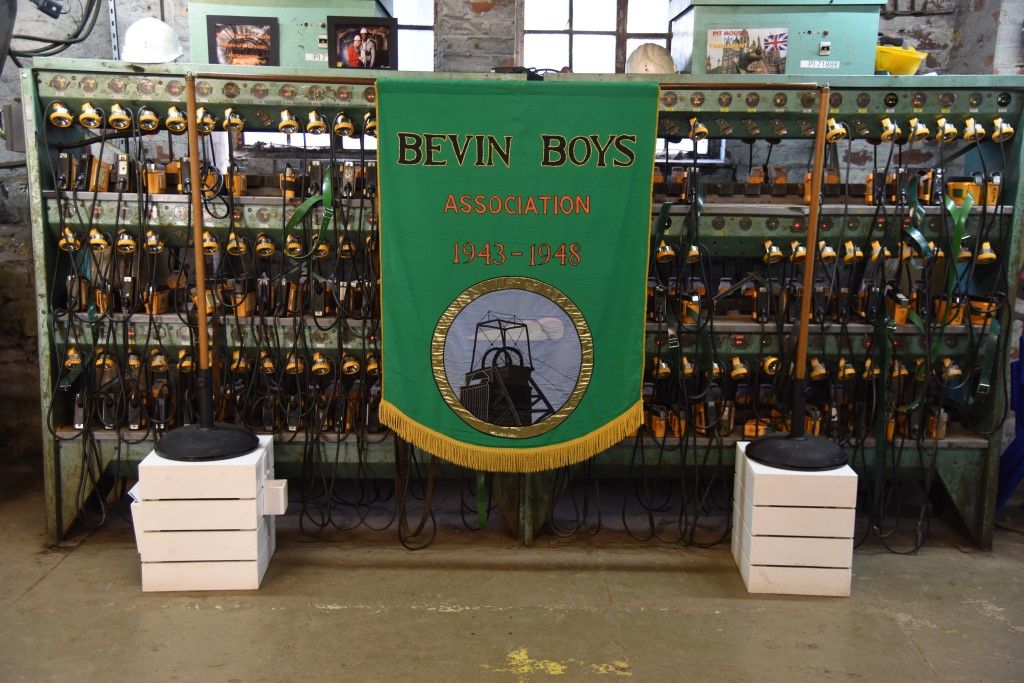Voices in the Coalshed: VE Day

When war was declared in the UK on 3rd September 1939 coal became vital to the nation’s resilience. There were 761,000 coal miners.
To boost the numbers of people in the armed forces, which was essential, in September 1939 the National Service (Armed Forces) Act was passed. This required all males aged between 18 and 41 to register for military service. Those medically unfit were exempted, as were others in key industries such as baking, farming, medicine, and engineering. Initially coal miners were not exempted from military service. In December 1941 Parliament passed a second National Service Act. This required all unmarried women and childless widows between the ages of 20 and 30 to be conscripted, although they would not be in frontline roles. This act also required men up to the age of 60 to do some form of National Service and included military service for those under 51 years of age.
By the summer of 1943, 36,000 miners had joined the armed forces.
This created a problem in the coal mines as it left the elderly and infirm trying to maintain pre-war coal delivery schedules. Coal supplies were dwindling at a time that the country needed coal production to be at a maximum.
The Minister of Labour and National Service, Ernest Bevin, announced, in parliament, that they needed 40,000 men to work in the mines. Initially, he had a register of all retired or ex-miners which gave him around 100,000 names. But of those on the register, less than a quarter were willing to return to the mines.
He then gave young male conscripts the option of working in the mines instead of military service. This was unsuccessful and resulted in only 1,100 recruits.
Bevin made a radio appeal on 12th November 1943, to all sixth form students to volunteer to work producing coal as follows:
“We need 720,000 men continuously employed in this industry. This is where you boys come in. Each one of you, I am sure, is full of enthusiasm to win this war. You are looking forward to the day when you can play your part with your friends and brothers who are in the Navy, the Army, the Air Force … But believe me, our fighting men will not be able to achieve their purpose unless we get an adequate supply of coal … So, when you go to register and the question is put to you “Will you go into the mines?” let your answer be, “Yes, I will go anywhere to help win this war”.[1]
This appeal failed. Bevin then had no choice but to compel men to work in the mines.
From December 14th, 1943, men were conscripted to work in coal mines. The selection was done by a civil servant ‘pulling a number out of a hat’. Any man liable for conscription whose national service number ended with that number was sent to the coal face.
The option of going into the coal mines as an alternative to frontline service may appear as a safer option and these mining conscripts were often reported by the public to police as deserters, conscientious objectors or conscription dodgers.
Working in the coal mines was, in some circumstances, far more dangerous than military service. A fact highlighted by Ellis Smith MP for Stoke, who during a debate in the House of Commons on 21st October 1943, stated:
“Deaths and accidents take a terrible yearly toll of the men employed in the mining industry. 925 men were killed in 1941 and 877 in 1942; 2,990 miners were seriously injured in 1941 and 2,809 in 1942. In the mining industry alone approximately 120,000 miners are injured every year. Here is another figure which helps to drive home the seriousness of it to every one of us. We all express our concern and sympathy with those who have been injured as a result of enemy air-raids, but there are more injured each year in the mining industry than the total number of people who suffered as a result of enemy air-raids from 1939 to the end of 1942”. [2]
The war in Europe came to an end on 8th May 1945 with the German surrender.
A plan for demobilisation of military personnel was agreed by Parliament in September 1944 and was put in to practise in June 1945.
Ernest Bevin was the architect of the demobilisation plan. Military service personal were given a grant of £83 each, a right to return to prewar jobs, and a set of civilian clothing, which included a suit, shirts, underclothes, raincoats, hat, and shoes. At the end of 1945, 750,000 had been ‘demobbed’.
The 48,000 conscripts in the coal mines of the UK looked forward to their demobilization. Unfortunately, that was not to be the case and although after 1945 no more conscripts were sent to the mines those who had been conscripted were not fully released until 1948.
Conscripted miners were able to enjoy the nationwide Victory in Europe celebrations, in May 1945, but were not able to enjoy demobilisation benefits of the armed forces conscripts.
It is ironic that Ernest Bevin devised both the conscription of miner’s scheme and the military demobilisation scheme but failed to include the conscripted miners in the post war benefits those military personnel received.
[1] Bevin, Ernest (December 1943) [1st broadcast 12 November 1943]. “A call to youth for the coal mines”. British Speeches of the Day. Vol. 10. London: British Information Services. pp. 22–2
[2] Mr Ellis Smith MP for Stoke (1935-1950) MP for Stoke on Trent South (1950-1966) Hansard: Workmen’s Compensation (Temporary Increases) Bill: Thursday 21st October 1943. Volume 392: Column: 1556 1557
Image credit: Ian Beesley
Blog written by volunteer Roger